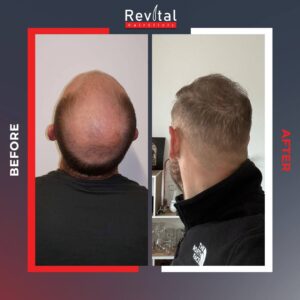Is Sapphire FUE and FUE the Same?
Hair loss treatments have evolved significantly over the years, offering various techniques to restore hair in a natural-looking and effective way. Among the most popular methods are FUE (Follicular Unit Extraction) and Sapphire FUE. While both of these procedures fall under the same general category of hair transplantation, there are key differences between them.
In this article, we will discuss the fundamental differences between FUE and Sapphire FUE hair transplantation, highlighting the benefits of each and helping you understand which technique might be best suited for your needs.
What is FUE Hair Transplantation?
FUE (Follicular Unit Extraction) is one of the most widely used methods for hair restoration. It involves extracting individual hair follicles from the donor area (typically the back or sides of the head) and transplanting them into areas that have experienced hair loss or thinning.
Key steps in the FUE process:
- Extraction: Using a small, circular punch tool, individual hair follicles are carefully removed from the donor area.
- Incision Creation: Tiny incisions are made in the recipient area, where the hair follicles will be transplanted.
- Implantation: The extracted hair follicles are then carefully implanted into the recipient area.
FUE is favored due to its minimally invasive nature, lack of a linear scar, and relatively quick recovery time. However, there are some limitations regarding the precision of the incisions and the tools used for follicle extraction.
What is Sapphire FUE Hair Transplantation?
Sapphire FUE is a more advanced version of the traditional FUE technique. The key difference is the use of sapphire blades instead of traditional steel blades to make the incisions where the hair follicles will be implanted. These sapphire blades are made from sapphire crystal, a material that is more durable, sharper, and smoother than conventional steel.
Key differences in the Sapphire FUE process:
- Extraction: Like FUE, hair follicles are extracted from the donor area. However, the extraction process can be more precise due to the finer and sharper blades used in Sapphire FUE.
- Incision Creation: This is where the most significant difference lies. Sapphire FUE uses sapphire blades to create the incisions, while traditional FUE uses steel blades.
- Implantation: The extracted follicles are then placed in the recipient area with high precision, ensuring a natural and dense hairline.
The Sapphire FUE method provides several benefits, including reduced trauma to the scalp, minimal scarring, and faster healing time, making it an attractive option for many individuals.
Key Differences Between Sapphire FUE and FUE
Although both techniques fall under the FUE category, the main difference between Sapphire FUE and traditional FUE lies in the tools used for creating the incisions. Here’s a closer look at the key differences:
- Blades Used for Incision Creation
- FUE: Traditional FUE uses steel blades to make small incisions where the hair follicles are placed. While effective, steel blades can sometimes cause more trauma to the scalp, resulting in longer healing times and slightly more visible scars.
- Sapphire FUE: Sapphire FUE uses sapphire-coated blades, which are much sharper, finer, and smoother. This allows for more precise incisions that minimize scalp trauma and reduce healing time. The sharpness of the sapphire blades also reduces bleeding, leading to a more comfortable procedure.
- Healing and Scarring
- FUE: The steel blades used in traditional FUE may create slightly larger incisions, which could result in a longer recovery period and slightly more visible scarring. However, the scars from FUE are generally small and circular and often fade over time.
- Sapphire FUE: The sapphire blades create smaller, more precise incisions, leading to minimal scarring. The recovery period is also faster because there is less tissue damage. Patients tend to experience less swelling and less bleeding post-procedure with Sapphire FUE compared to traditional FUE.
- Precision and Natural Results
- FUE: Traditional FUE offers great results but may be slightly less precise than Sapphire FUE, particularly when it comes to incision placement and hair follicle direction. This may impact the overall density and natural appearance of the transplanted hair in some cases.
- Sapphire FUE: The high precision of sapphire blades ensures that the incisions are made with great accuracy, resulting in a more natural-looking hairline. This technique also allows for a higher follicular density in the recipient area, leading to fuller results.
- Procedure Time
- FUE: The procedure time for traditional FUE can vary depending on the number of grafts being transplanted. Since the incisions are slightly larger and the process might be less efficient, procedure time can be longer than Sapphire FUE.
- Sapphire FUE: Because the sapphire blades are so precise and allow for smaller incisions, the procedure tends to be more efficient, and in some cases, it may take less time than traditional FUE.
- Suitability for Different Hair Types
- FUE: Traditional FUE is effective for a wide range of hair types, although people with thicker hair or coarser scalp may not see as much benefit as those with finer hair.
- Sapphire FUE: The precision of sapphire blades makes it suitable for individuals with thicker or curly hair, as it allows for more accurate follicle placement and better density, leading to more natural results.
Which One is Better: FUE or Sapphire FUE?
Both FUE and Sapphire FUE are excellent methods of hair restoration, but the best choice depends on your specific needs, hair type, and the severity of your hair loss.
- Traditional FUE may be suitable for those who are looking for a reliable and well-established method of hair restoration with minimal downtime and good results.
- Sapphire FUE is the preferred option for those looking for more precision, faster recovery, and naturally dense, fuller hair. The use of sapphire blades makes the procedure less invasive and provides superior aesthetic results.
In general, Sapphire FUE tends to offer more advanced and aesthetically pleasing results, especially for those who want a more natural hairline and minimal visible scarring.
⚕️ Consult with a Specialist
If you’re considering a hair transplant, the best way to determine whether FUE or Sapphire FUE is right for you is to consult with an experienced hair transplant specialist. They will assess your hair loss pattern, donor hair quality, and overall goals to recommend the best treatment for you.
At Revital Hair Clinic, we specialize in both FUE and Sapphire FUE hair transplant techniques. Our team of experts is dedicated to providing personalized care and helping you achieve the results you desire.
Contact us today to schedule a consultation and start your journey toward a fuller, more confident you!
Revital Hair Clinic © 2024












Leave a Reply